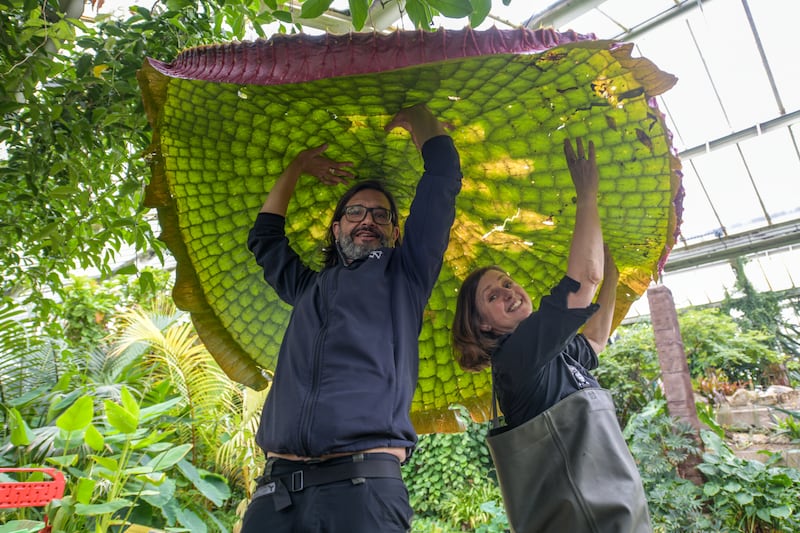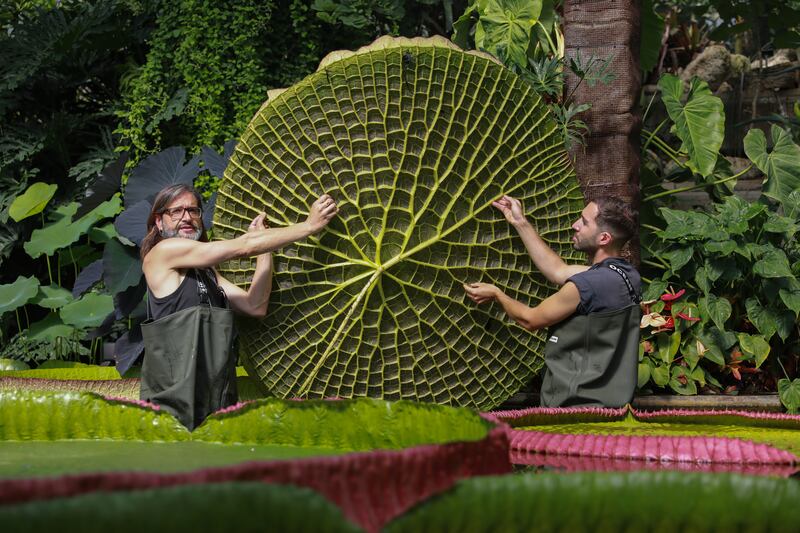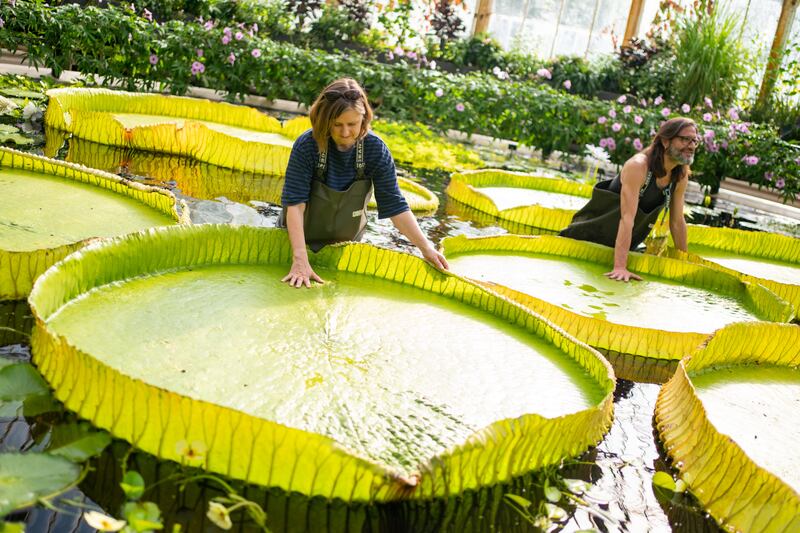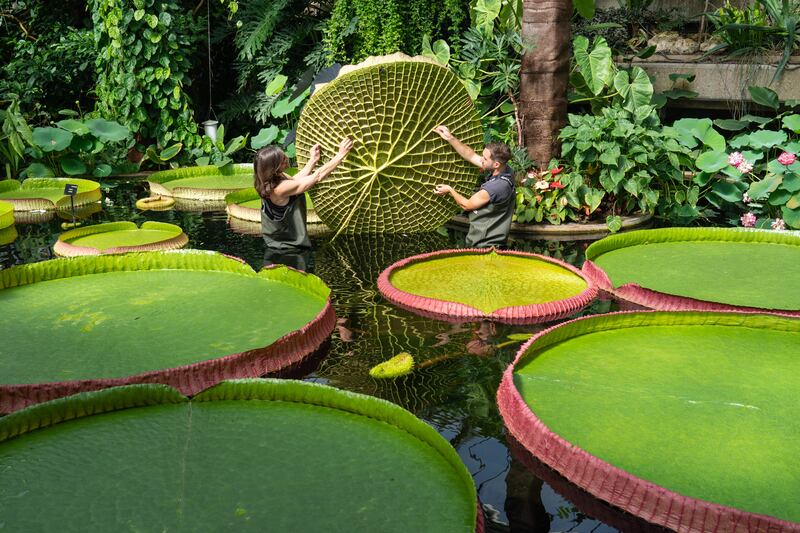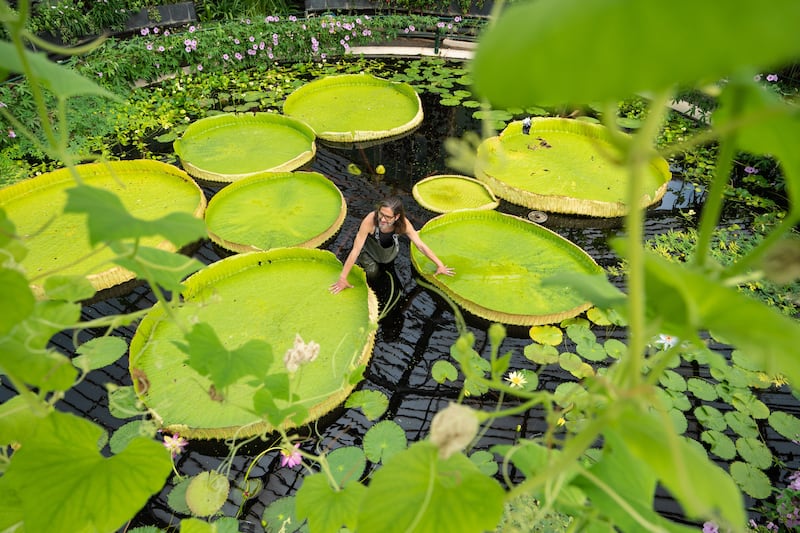A giant water lily at Kew Gardens in west London has been identified as a new species after growing to 3 metres in diameter.
The lily — the largest in the world — is from Bolivia and has been named Victoria boliviana, the third species with the genus Victoria named after Britain’s Queen Victoria in 1852.
Specimens of it have been in Kew’s Herbarium for 177 years and in the National Herbarium of Bolivia for 34 years. During this time, it was commonly believed to be Victoria amazonica.
The discovery is documented in a new paper, published on Monday in the journal Frontiers in Plant Science. It marks the culmination of a years-long investigation by a team of experts from the UK and South America.
Dr Alex Monro, research leader in the American team at Kew and senior author of the paper, called the findings an “incredible achievement” in the botany world. The paper’s authors decided to name the species in honour of Bolivian partners and the South American home of the water lily where it grows in the aquatic ecosystems of Llanos de Moxos.
With flowers that turn from white to pink and bearing spiny petioles, Victoria boliviana is now the largest water lily in the world, with leaves growing as wide as 3 metres in the wild.
The current record for the largest species is held by La Rinconada Gardens in Bolivia where leaves reached 3.2 metres.
For decades species in the genus Victoria have been poorly characterised because of an absence of type specimens — specimens of the original plant used to formally describe the species — in global plant collections. This has been put down to the fact that giant waterlilies are difficult to collect in the wild.
The team of investigators compiled a database of all available information from historical records, horticulture and geography. They also collected specimens from herbaria and living collections around the world.
The new species was found to be genetically different from the other two. The data collected confirmed what the authors had suspected — that there are in fact three species in this genus: Victoria amazonica, Victoria cruziana and Victoria boliviana.
The results of the study suggest the latest species is most closely related to Victoria cruziana, and that they diverged around a million years ago.
Natalia Przelomska, a biodiversity genomics researcher who studied the lily, said: “In the face of a fast rate of biodiversity loss, describing new species is a task of fundamental importance.
“We hope that our multidisciplinary framework might inspire other researchers who are seeking approaches to rapidly and robustly identify new species.”
Dr Monro said the Victoria genus has a special place in Kew’s history “having been one of the reasons that Kew was saved from closure in the 1830s”.
“To have played a role in improving knowledge about these magnificent and iconic plants has added resonance for the Kew partner,” he said.
Kew’s scientific and botanical research horticulturist Carlos Magdalena, who helped lead the team of experts, said he learnt so much in the process of officially naming the new species.
“It’s been the biggest achievement of my 20-year career at Kew,” he said.


